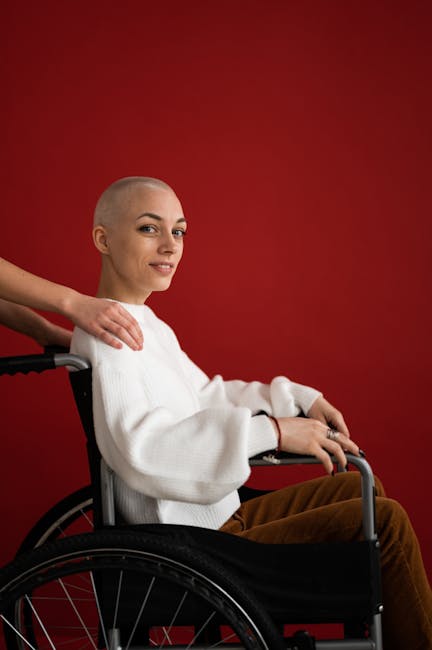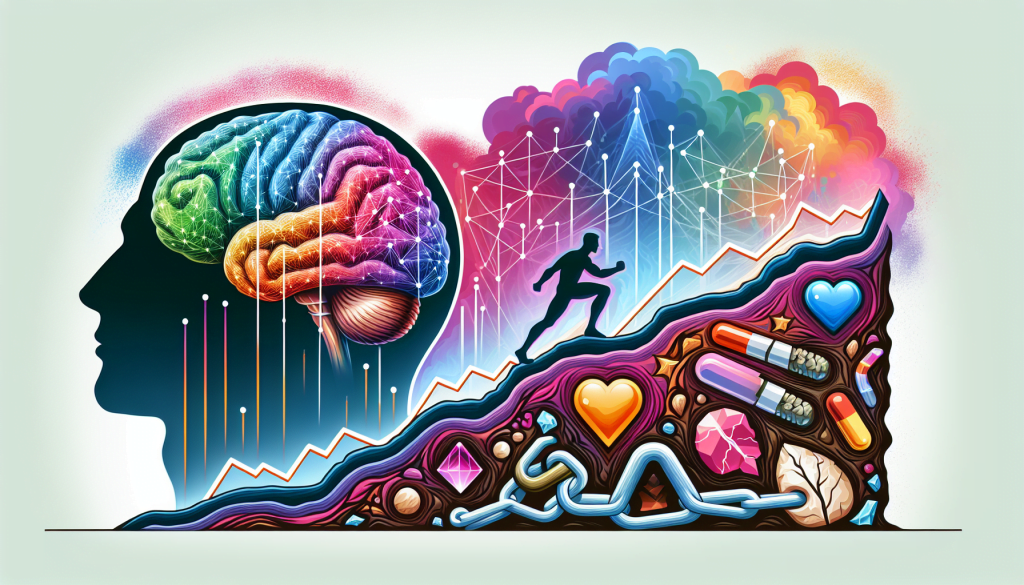The question of whether neurofeedback therapy can assist in overcoming addiction permanently is a compelling one, and the answer is increasingly affirmative. This blog post delves into the fascinating world of neurofeedback therapy, its connection to addiction, and how it can be a game-changer in addiction treatment. If you’re interested in the intersection of neuroscience and addiction recovery, this post is for you.
Key Takeaways
- Neurofeedback therapy is a non-invasive, brain-based treatment that can help manage addiction.
- Addiction is a brain-based disorder that can be targeted by neurofeedback therapy.
- Neurofeedback therapy can reduce cravings, improve emotional regulation, and enhance cognitive functioning.
- Integrating neurofeedback with other addiction treatments can yield better outcomes.
- There are challenges and limitations to neurofeedback therapy, but its potential in addiction treatment is promising.
Introduction to Neurofeedback Therapy
Definition of Neurofeedback Therapy
Neurofeedback therapy, also known as EEG biofeedback, is a type of biofeedback that uses real-time displays of brain activity to teach self-regulation of brain function. It’s a non-invasive procedure that can be used to treat a variety of mental health conditions, including addiction.
Overview of How Neurofeedback Works
Brainwave Monitoring
Neurofeedback therapy begins with monitoring brainwaves using sensors placed on the scalp. These sensors measure electrical activity in the brain, which is then displayed on a computer screen.
Feedback Mechanism
The feedback mechanism in neurofeedback therapy involves rewarding the brain for changing its activity to more appropriate patterns. This is done through visual or auditory feedback, such as a video game or sound.

The Connection Between Neurofeedback Therapy and Addiction
Understanding Addiction as a Brain-Based Disorder
Addiction is increasingly understood as a brain-based disorder. It involves changes in the brain’s reward system, which leads to compulsive substance use despite harmful consequences. Neurofeedback therapy can target these changes, making it a promising approach for addiction treatment. For more on this, check out our post on neurofeedback and addiction treatment.
How Neurofeedback Targets the Brain’s Addiction Pathways
Neurofeedback therapy targets the brain’s addiction pathways by training the brain to self-regulate. This can help reduce cravings and improve emotional regulation, both of which are crucial for overcoming addiction.

Benefits of Neurofeedback Therapy in Addiction Treatment
Reduction in Cravings
One of the key benefits of neurofeedback therapy in addiction treatment is the reduction in cravings. By training the brain to self-regulate, neurofeedback can help manage the intense cravings that often come with addiction.
Improvement in Emotional Regulation
Neurofeedback therapy can also improve emotional regulation, which is often compromised in individuals with addiction. Improved emotional regulation can lead to better coping strategies and less reliance on substances for emotional relief.
Enhanced Cognitive Functioning
Finally, neurofeedback therapy can enhance cognitive functioning, which can be impaired in individuals with addiction. This can lead to improved decision-making and impulse control, both of which are crucial for long-term recovery. You can learn more about the benefits of neurofeedback for mental health treatment here.

Integrating Neurofeedback with Other Addiction Treatments
Combination with Medical Detox
Neurofeedback therapy can be effectively combined with medical detox, a process that helps individuals safely withdraw from substances. The combination of these treatments can help manage withdrawal symptoms and reduce the risk of relapse.
Role in Residential Treatment Care (RTC)
In a Residential Treatment Care (RTC) setting, neurofeedback therapy can be a valuable tool for helping individuals learn to manage their addiction. It can be used alongside other therapies to provide a comprehensive approach to addiction treatment.
Synergy with Intensive Outpatient Program (IOP)
Neurofeedback therapy can also be integrated into an Intensive Outpatient Program (IOP), where individuals receive treatment while living at home. This can provide the flexibility needed for individuals to continue with their daily responsibilities while receiving treatment.
Complementing Dual Diagnosis Treatment
For individuals with a dual diagnosis (co-occurring mental health and substance use disorders), neurofeedback therapy can be a valuable addition to their treatment plan. It can help manage both the addiction and the mental health disorder, leading to better overall outcomes. For more on this, check out our post on the integration of neurofeedback with other therapy approaches.

Case Studies and Evidence Supporting Neurofeedback in Overcoming Addiction
Overview of Relevant Research Findings
Research on neurofeedback therapy and addiction is still in its early stages, but the findings so far are promising. Several studies have shown that neurofeedback can reduce cravings and improve emotional regulation in individuals with addiction.
Personal Success Stories
There are also numerous personal success stories of individuals who have used neurofeedback therapy to overcome addiction. These stories provide anecdotal evidence of the potential of this therapy in addiction treatment.
Long-term Impact on Addiction Recovery
While more research is needed, initial studies and personal success stories suggest that neurofeedback therapy can have a long-term impact on addiction recovery. It can help individuals maintain their recovery and reduce the risk of relapse.

Challenges and Limitations of Neurofeedback Therapy
Accessibility and Cost
One of the main challenges of neurofeedback therapy is its accessibility and cost. The therapy can be expensive, and not all insurance companies cover it. Additionally, it requires trained practitioners, which can limit its availability.
Variability in Treatment Outcomes
There is also variability in treatment outcomes with neurofeedback therapy. Not everyone responds to the therapy in the same way, and some individuals may not see significant improvements.
Need for Qualified Practitioners
Finally, there is a need for qualified practitioners to administer neurofeedback therapy. This requires specialized training and expertise, which can be a barrier to its widespread use.

Steps to Access Neurofeedback Therapy for Addiction
Finding Qualified Neurofeedback Therapists
The first step to accessing neurofeedback therapy for addiction is to find a qualified therapist. This can be done through professional organizations or by asking for recommendations from healthcare providers.
Assessing Suitability for Neurofeedback
Once a therapist is found, the next step is to assess suitability for neurofeedback. This involves a comprehensive evaluation to determine if neurofeedback is the right treatment option.
Preparing for Therapy Sessions
Finally, individuals need to prepare for therapy sessions. This can involve learning about what to expect during sessions, setting goals for therapy, and making arrangements for ongoing treatment.
Future of Neurofeedback in Addiction Treatment
Innovations in Neurofeedback Techniques
The field of neurofeedback is constantly evolving, with new techniques and technologies being developed. These innovations have the potential to make neurofeedback more effective and accessible in addiction treatment.
Potential for Wider Adoption in Treatment Programs
As more research is conducted and the benefits of neurofeedback become more widely recognized, there is potential for wider adoption in treatment programs. This could make neurofeedback a more common part of addiction treatment.
Ongoing Research and Developments
Finally, ongoing research and developments in the field of neurofeedback hold promise for the future of addiction treatment. As we continue to learn more about the brain and addiction, neurofeedback therapy is likely to play an increasingly important role in helping individuals overcome addiction permanently.

In conclusion, neurofeedback therapy presents a promising approach to overcoming addiction. While there are challenges and limitations, the potential benefits of this therapy make it a worthwhile consideration for anyone seeking help with addiction. For more information on neurofeedback and its role in treating various mental health conditions, check out our post on the use of neurofeedback in treating anxiety and stress disorders.
Unlocking the Mind: How Neurofeedback Therapy Can Be a Game-Changer in Overcoming Addiction – FAQ
What is neurofeedback therapy and how does it work?
Neurofeedback therapy, also known as EEG biofeedback, is a type of therapy that aims to teach individuals how to alter their brain waves through real-time feedback. By monitoring brain activity via electrodes placed on the scalp, individuals can learn to control and adjust their brain functions. This process can help improve various cognitive, emotional, and physical conditions, including addiction, by promoting self-regulation and enhancing brain function.
Can neurofeedback therapy help overcome addiction permanently?
While neurofeedback therapy has shown promising results in helping individuals manage and reduce addictive behaviors, it is not a standalone cure. Addiction is a complex condition influenced by various factors, including genetics, environment, and personal experiences. Neurofeedback can be an effective component of a comprehensive treatment plan, potentially leading to long-term recovery when combined with other therapeutic approaches such as counseling and medication.
Is neurofeedback therapy effective for all types of addiction?
Neurofeedback therapy has been applied to a range of addictions, including substance abuse (such as alcohol, nicotine, and drugs) and behavioral addictions (like gambling). Its effectiveness can vary depending on the type of addiction, the individual’s specific brain patterns, and their commitment to the therapy. It is most effective when tailored to meet the unique needs of the individual.
What are the potential benefits of neurofeedback therapy for addiction?
Potential benefits of neurofeedback therapy for individuals struggling with addiction include improved self-regulation, reduced cravings, better stress management, enhanced emotional stability, and increased cognitive functions such as attention and memory. These improvements can support the recovery process by helping individuals gain more control over their addictive behaviors.
How long does it take to see results from neurofeedback therapy for addiction?
The timeline for seeing results from neurofeedback therapy can vary widely among individuals. Some may notice improvements within a few sessions, while others may require more extended treatment to experience significant changes. Typically, a course of 20 to 40 sessions is recommended, but the exact number can depend on the individual’s condition and response to the therapy.
Are there any risks or side effects associated with neurofeedback therapy?
Neurofeedback therapy is generally considered safe and non-invasive, with minimal risk of side effects. Some individuals may experience temporary discomfort from the electrode placement or mild fatigue after a session. However, these side effects are typically short-lived and do not pose significant health risks.
Can neurofeedback therapy be used in conjunction with other treatments for addiction?
Yes, neurofeedback therapy is often used as part of a comprehensive treatment plan for addiction. It can complement other forms of therapy, such as cognitive-behavioral therapy (CBT), medication-assisted treatment (MAT), and support groups. Integrating neurofeedback can enhance the overall effectiveness of addiction treatment by addressing underlying brain activity patterns related to addictive behaviors.
How can someone get started with neurofeedback therapy for addiction?
To get started with neurofeedback therapy, it’s essential to consult with a healthcare provider or a specialist trained in neurofeedback. They can assess your condition, discuss your treatment goals, and determine if neurofeedback is a suitable option. Once a plan is in place, sessions typically involve sitting comfortably while brain activity is monitored and feedback is provided through visual or auditory signals.



